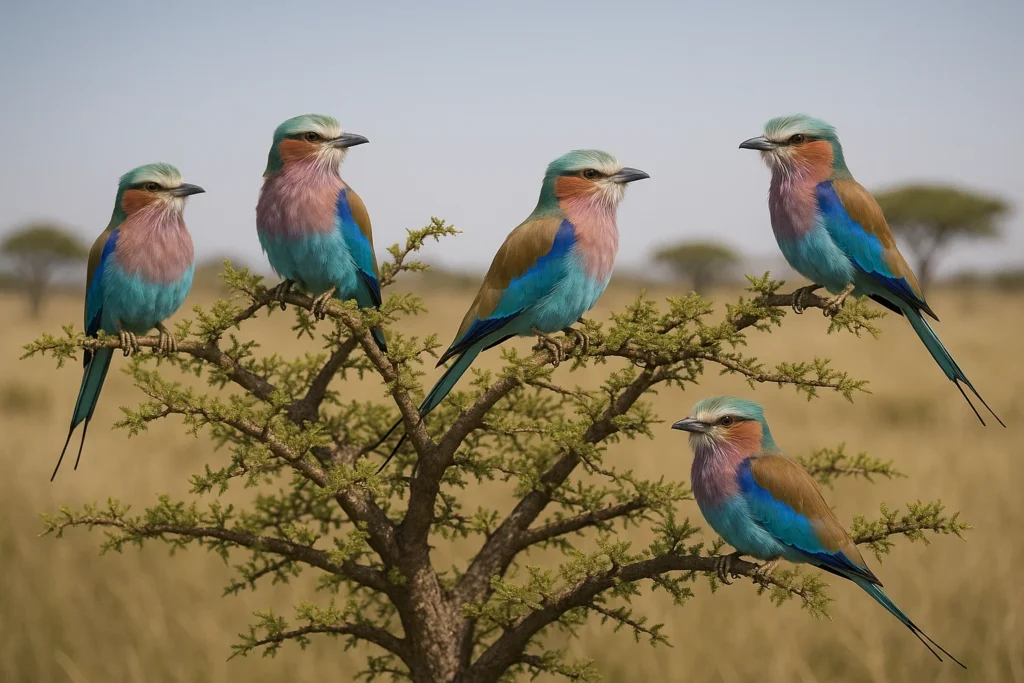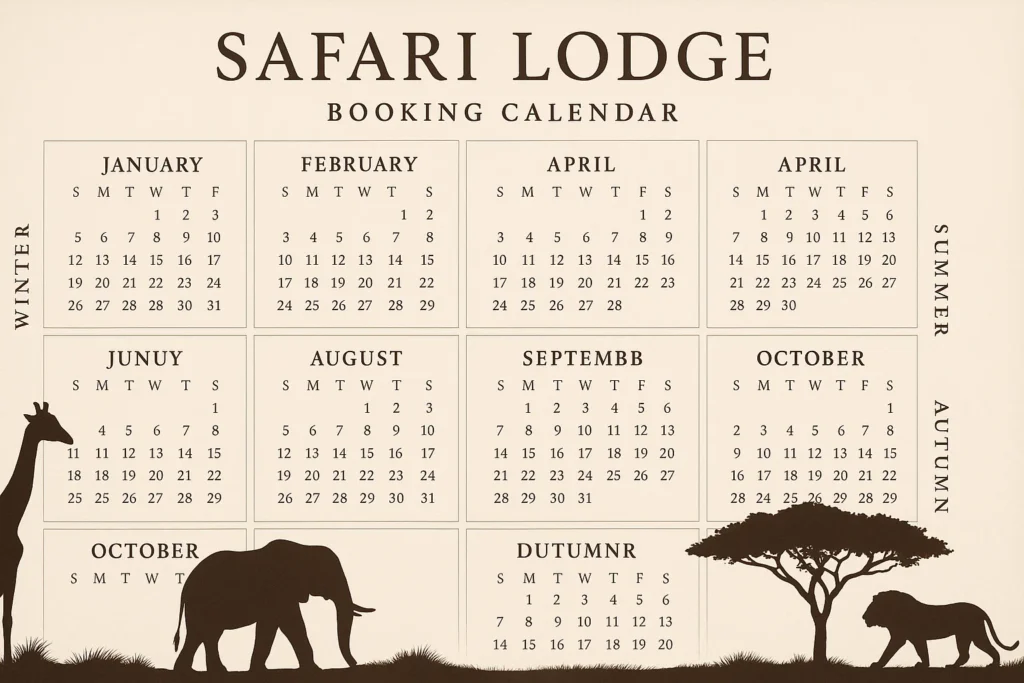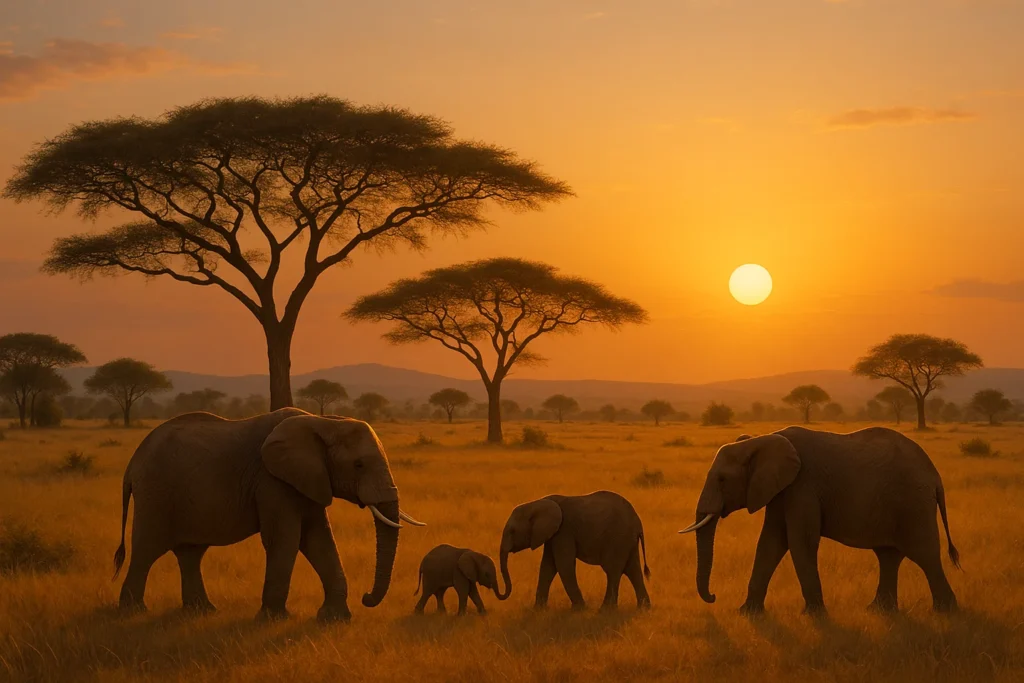Bird lovers and safari-goers alike are in for a treat—Africa’s wild places are home to some of the continent’s most iconic and colorful avian species. Whether you’re ticking off a bird checklist or seeking vibrant wildlife photography, here’s a curated list of the top 10 birds to see on safari, along with prime places where each is more likely to be spotted.
Bird List: Identity, highlights, and best locations
1. African Fish Eagle
Why see it: The striking white head, chestnut body and piercing call make it Africa’s most famous eagle.
Where to find it: Along rivers and lakes in Chobe, Serengeti, Okavango Delta, and Kruger.
2. Lilac-breasted Roller
Why see it: A dazzling mix of blues, purples, and pinks—best photographed alive in flight or perched.
Where: Widespread in East and Southern Africa: Serengeti, Kruger, Masai Mara.
3. Secretary Bird
Why see it: Unmistakable on tall legs, hunting snakes across the savannah.
Where: Open grasslands across sub-Saharan Africa—Tanzania, Kenya, South Africa.
4. Grey Crowned Crane
Why see it: Regal display bird with a golden feathered crown and elaborate courtship dances.
Where: Wet grasslands and floodplains in Uganda, Kenya, Tanzania, South Africa.
5. Malachite Kingfisher
Why see it: Tiny, jewel-toned bird seen darting above freshwater bodies.
Where: Riverbanks and wetlands in Chobe, Okavango Delta, Ruaha.
6. African Skimmer
Why see it: Whisking along water surfaces with its lower mandible slicing the surface to catch fish.
Where: Riverbanks in Chobe, Zambezi, and Okavango. Best early morning or late afternoon.
7. Southern Carmine Bee-eater
Why see it: Vivid pink bodies and turquoise heads; often seen in large aerial flocks swooping over wooded rivers.
Where: River valleys and sandbanks—Chobe and Okavango regions.
8. Yellow-billed Stork
Why see it: Distinguished by its pink-tinged white plumage and long yellow bill used for tactile feeding.
Where: Wetlands and shallow lakes across East and Southern Africa.
9. Marabou Stork
Why see it: Massive scavenger with stark plumage and a dramatic silhouette; often seen near water or human settlements.
Where: Wetlands, riverbanks, and dump site edges in Kruger, Serengeti, Uganda.
10. Superb Starling
Why see it: Iridescent metallic plumage, tame behavior—perfectly perched on shrubs and termite mounds.
Where: Open savannah and edges of woodlands in East Africa.
Best places to go birding in Africa
- Kruger National Park (South Africa): Over 500 bird species including saddle-billed stork, kori bustard, martial eagle, and Pel’s fishing owl. A leading birding destination in Southern Africa.
- Serengeti & Tarangire (Tanzania): Notable bird diversity, combining savannah birds and migrants—excellent for rollers, bustards, and waterbirds.
- Chobe / Okavango Delta (Botswana): Abundant wetlands and river systems host species like African Skimmers, storks, kingfishers, and bee-eaters. Over 400+ species recorded.
Tips for birdwatching on safari
- Start early or late: Many species are most active during soft morning or evening light.
- Use binoculars & zoom lenses: Essential for distant perches or raptors.
- Listen as well as look: Species like eagles and rollers often reveal themselves by call before visual.
- Visit water and woodland habitats: Diversify where you drive—woodlands often hide cranes or owls.
Conclusion
From iconic birds like the African Fish Eagle and Lilac-breasted Roller to dramatic wetland species like the African Skimmer and Crane, your African safari offers a spectacle of avian life. By visiting Kruger, Serengeti, Okavango, or Chobe, and starting your days early near rivers and woodland edges, you can assemble your own unforgettable bird checklist—one that rivals any Big Five sightings in beauty.
Discover more bird‑watching guides, safari itineraries, and photography tips on our blog.
FAQs about birdwatching
Yes—many species like Lilac‑breasted Roller and Fish Eagle are common along rivers and plains on standard safari routes.
A good pair of binoculars and a 200‑600 mm lens are ideal, but even entry-level gear can pick up runners like rollers and cranes.
Yes—places like the Arabuko-Sokoke Forest in Kenya host rare species like Clark’s weaver and Sokoke Scops Owl.
Up to 500+ species recorded, making it an excellent destination for casual sighting or serious birders alike.
Migratory seasons (just after rains) bring increased activity, color, and flocks. Dry seasons between migrations often offer easier wildlife viewing.






